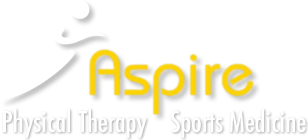Trigger point treatment:
Due to the repetitive nature of running and walking, certain muscle groups and areas of connective tissue are subjected to a higher degree of stress and strain than others. In the muscle tissue one can develop tight bands of tissue termed “trigger points.” There are two types of trigger points: active and latent. Active trigger points are painful when palpated and will refer a painful sensation in a specific pattern when they are pressed on. Latent trigger points do not refer pain but are painful when palpated. One common treatment to alleviate the pain and tightness associated with a trigger point is a trigger point release. A trigger point release is a technique where constant, increasing pressure is applied to the trigger point for up to 90 seconds. This treatment can be extremely painful but effective. The goal is to cause ischemia or decreased blood flow to the area. After the pressure is released, the body floods the region with blood which will cause a release of the bound up muscle tissue. Massage therapy, physical therapy and trigger point injections are other treatments. Massage therapists and physical therapists will typically use multiple interventions to treat these impairments.
Runners and walkers typcially develop trigger points in the muscle tissue along the lateral part of the hip/pelvis, just below the crest of the pelvis (iliac crest). These muscles are the gluteus minimus, gluteus medius and tensor fascia latae (not a type of coffee drink!). Press around in this area and feel for any tight, painful bands of tissue. You may find one and if you hold pressure there for a moment or two, it may radiate pain down the leg or into the buttock. This would be an active trigger point. If it just hurts where you are pushing, it is latent. A simple way to peform a trigger point release at home is to take a tennis ball and apply pressure to the muscle area with the ball between your hip and a wall. Get close to a wall, place the ball between your hip musculature and the wall. Lean into the ball, while trying to unweight the leg (keep most of your weight on the supporting leg and against your shoulder and torso against the wall). Move around until you find the trigger point, then keep pressure against it, increasing pressure if you can, for 90 seconds. You may feel the trigger point “release” before that (it may feel like a letting go or softening of the tissue). Search around for any other trigger points in the region and peform the same technique.
Trigger points need to be reduced as they can inhibit performance and can lead to muscle strains or other connective tissue dysfunctions that may require greater treatment. If you have trigger points that are difficult to release on your own, check with your primary care provider to determine if a more aggressive form of treatment might benefit you.

